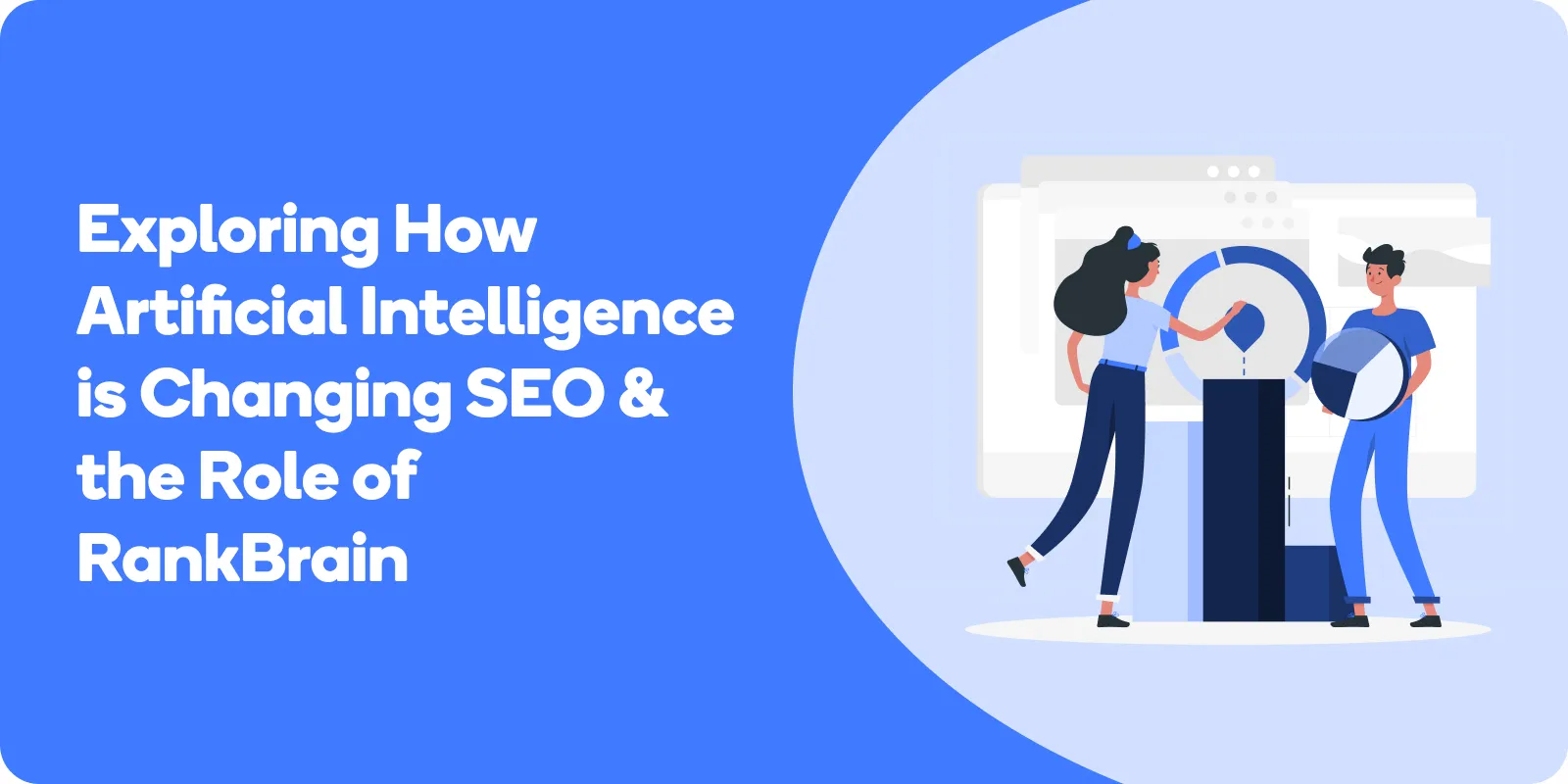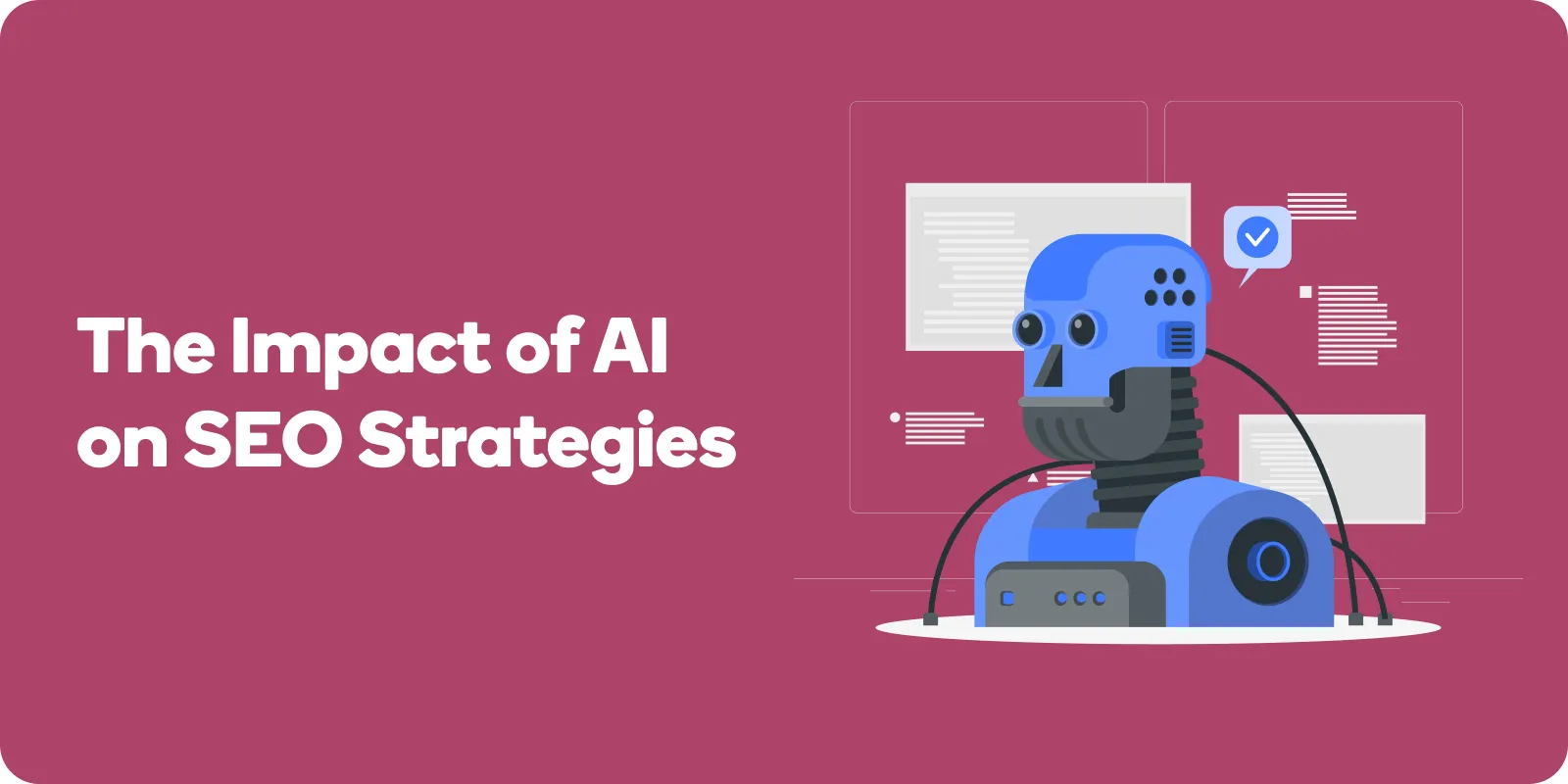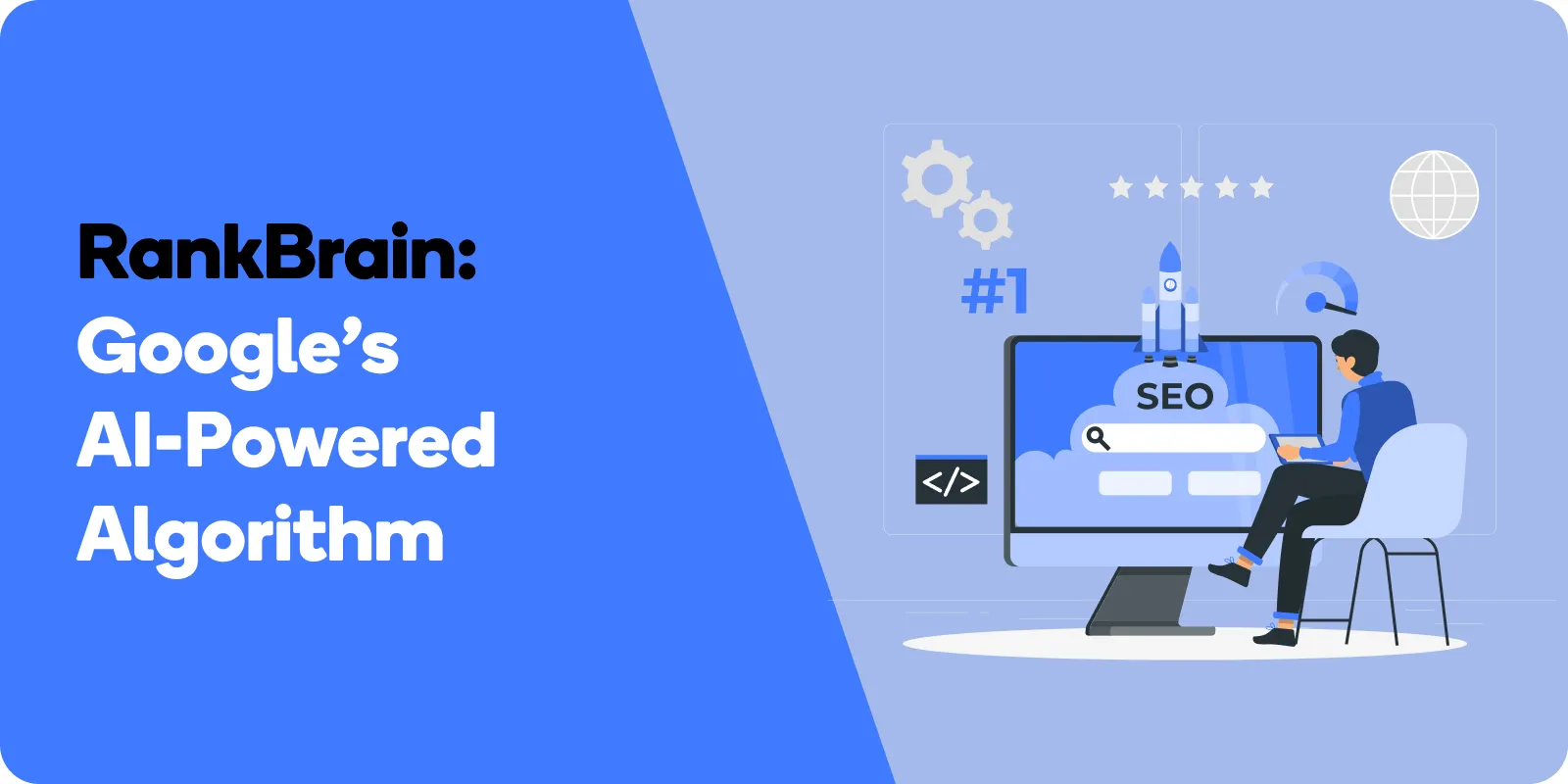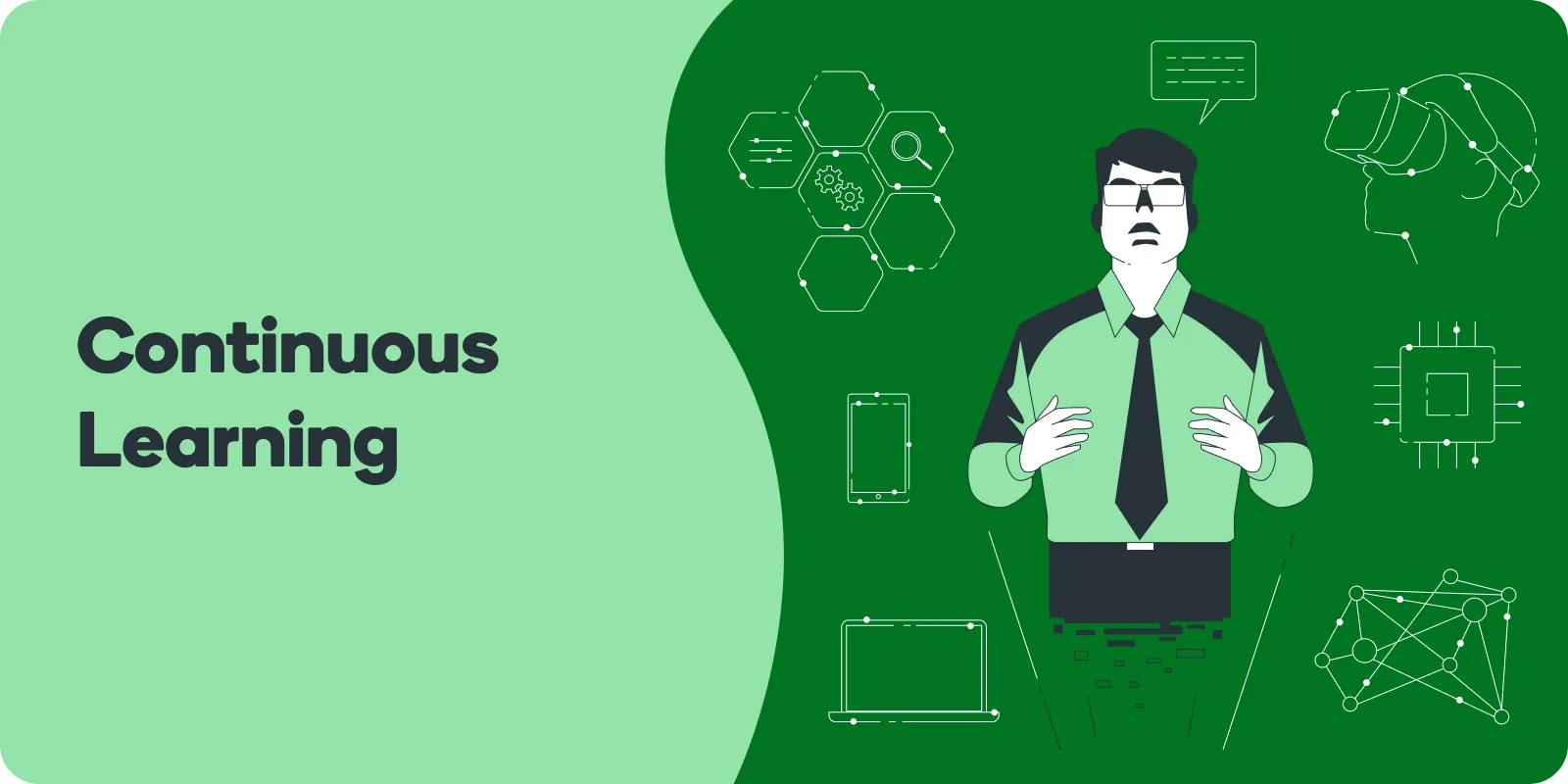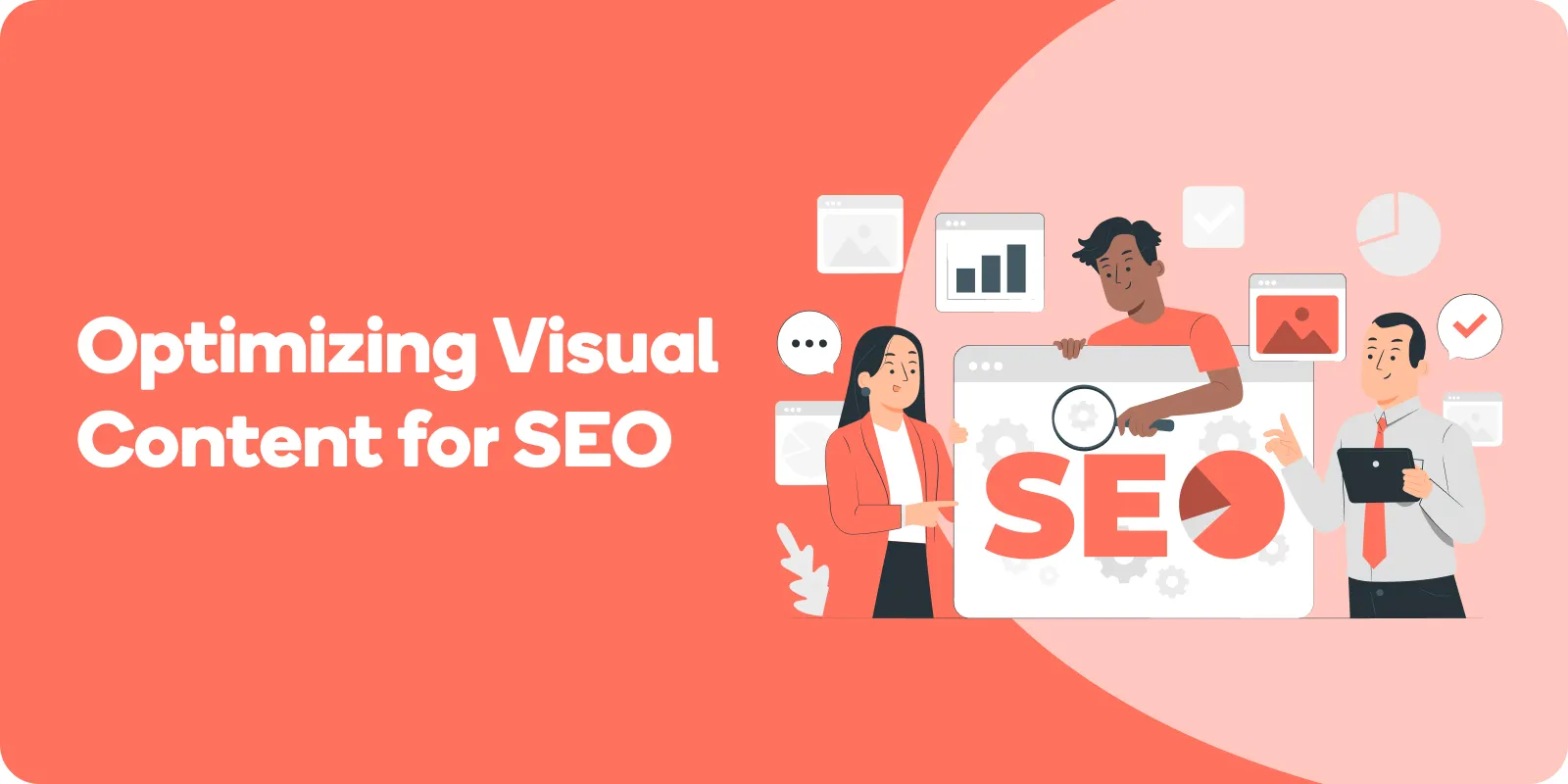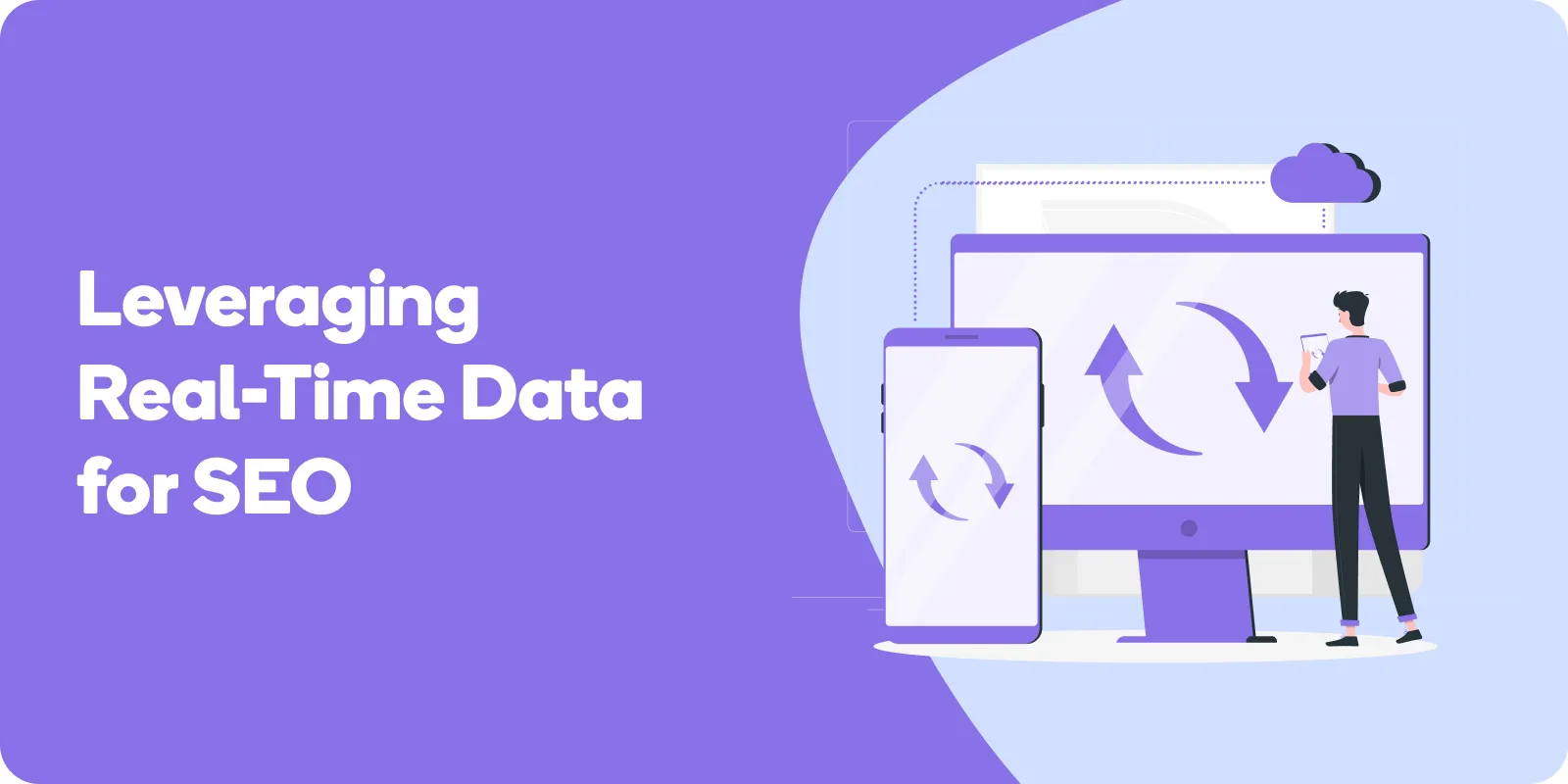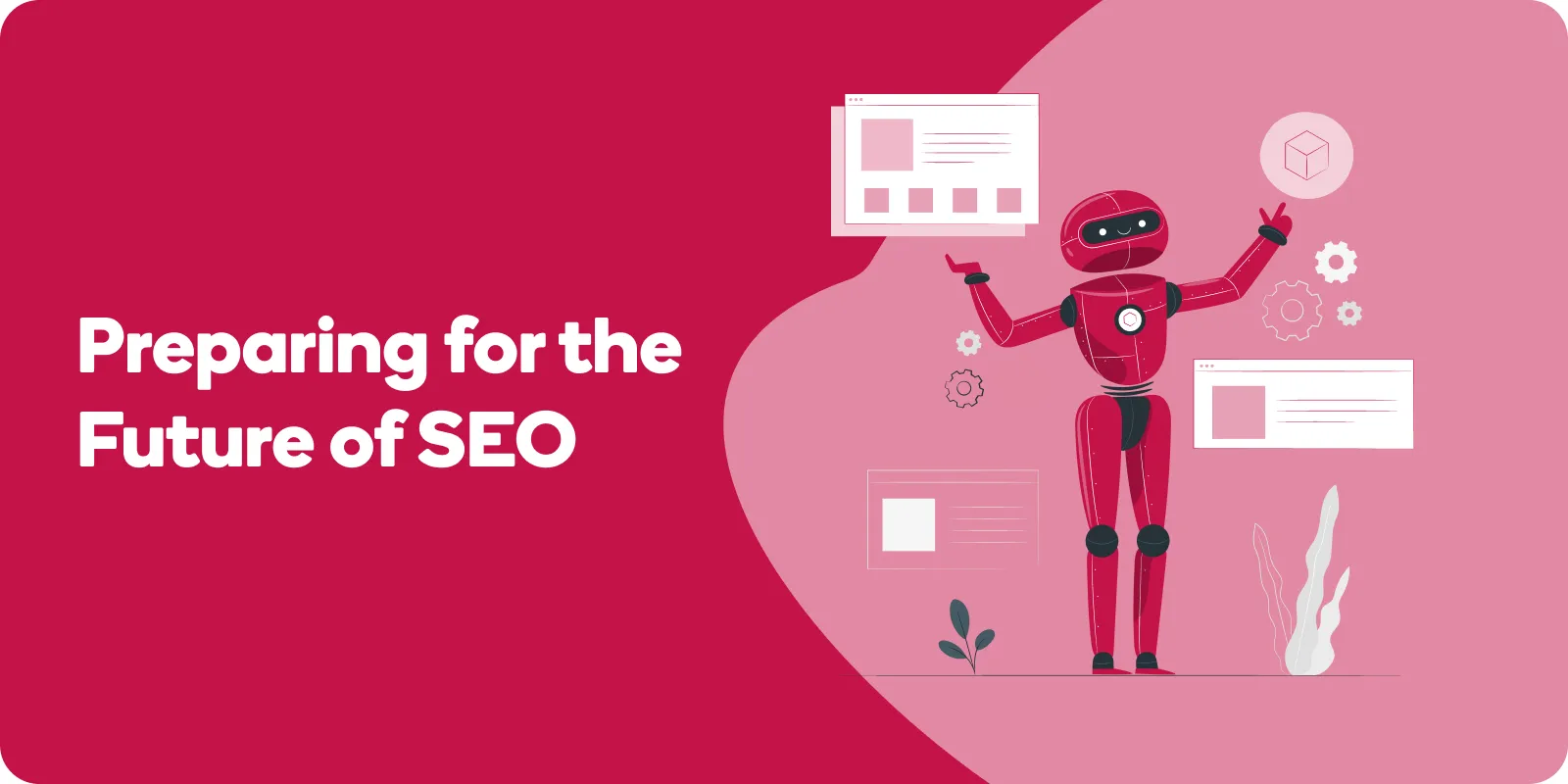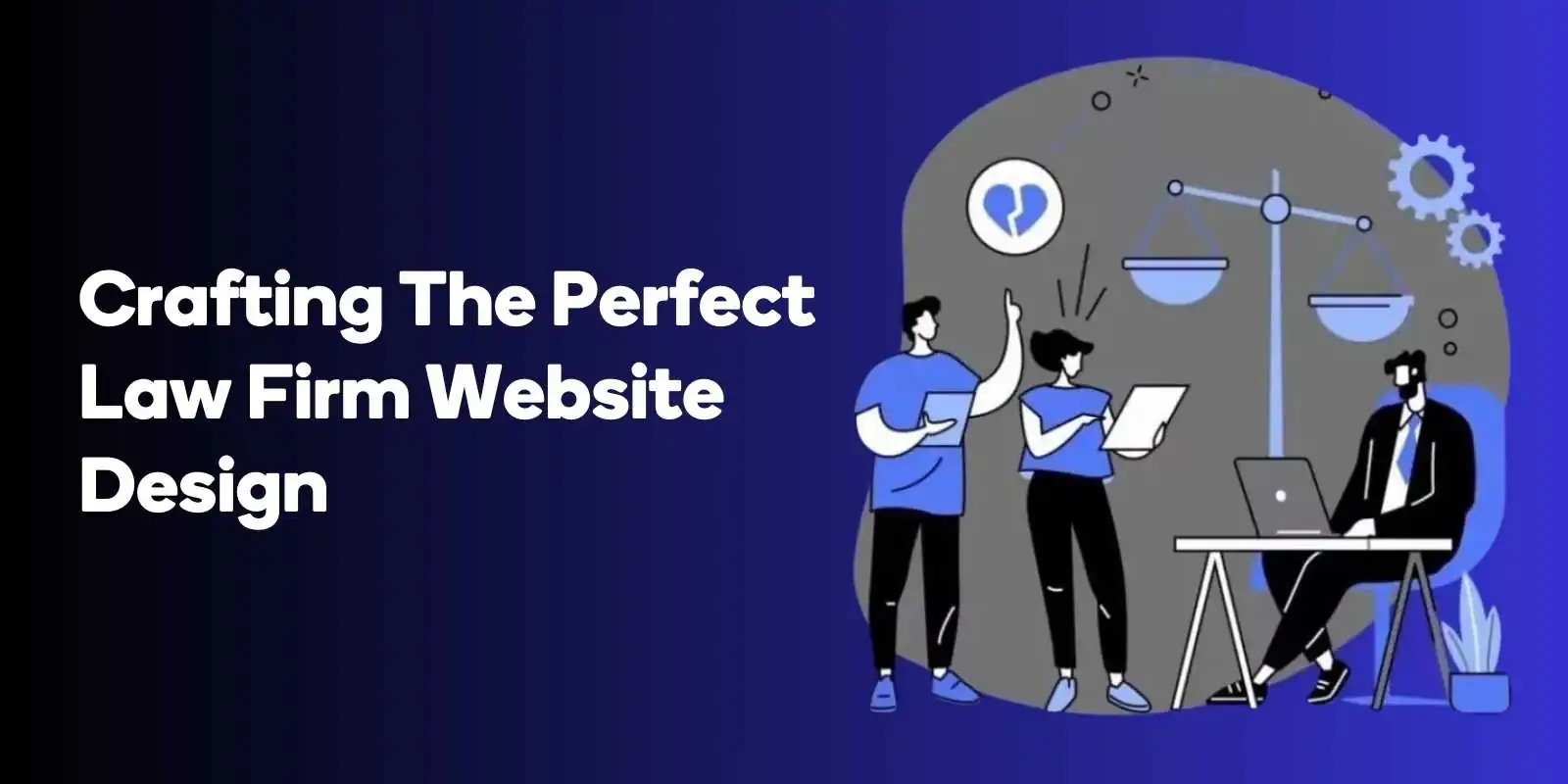In this blog post, we will explore how artificial intelligence is changing SEO, the role of RankBrain, in decoding user intent, optimizing visual content for SEO, leveraging real-time data, and preparing for the future of SEO.
Fasten your seatbelts as we embark on a journey through the world of AI-powered SEO, where black hat techniques become obsolete, content quality reigns supreme, and voice search takes center stage. It’s time to adapt and evolve, as the search landscape continues to transform at a rapid pace.
The Impact of AI on SEO Strategies
The integration of AI into SEO has redefined the way strategies are implemented, shifting the focus from keyword optimization and off-page signals like backlinks, to the quality of content itself as the most influential ranking factor.
This paradigm shift has led to the emergence of three major trends: countering black hat techniques, emphasizing content quality, and accommodating voice search.
As AI-powered search engines become increasingly adept at understanding natural language and user intent, online marketers must adapt their SEO strategies to stay ahead of the curve.
The emphasis on high-quality content, the demise of keyword stuffing, and the rise of voice search are just the tip of the iceberg when it comes to the transformative impact of AI on SEO.
Combating Black Hat Techniques
Black hat techniques, such as keyword stuffing, link spamming, and cloaking, have long plagued the digital landscape, negatively impacting user experience and search engine rankings.
However, AI is turning the tide against these unethical practices by making keyword stuffing obsolete and rewarding websites with naturally occurring keywords in their content.
The primary objective of SEO strategies in combating black hat techniques is to ensure content relevance.
As AI continues to advance, black hat practitioners will find it increasingly difficult to manipulate search engine rankings, rendering their tactics irrelevant. This shift underscores the importance of focusing on ethical, user-centric SEO strategies that prioritize content quality and relevance.
Emphasis on Content Quality
In the AI-driven SEO landscape, content quality is more critical than ever before. High-quality content not only engages and benefits the intended audience, but also demonstrates credibility and trustworthiness to search engines, generating valuable backlinks and improving search engine rankings.
To generate high-quality content for SEO, it is essential to consider the target audience, ensure readability and engagement, account for search intent and objectives, maintain credibility, and stay current.
MarketMuse, for example, evaluates content using AI principles similar to those of Google, providing precise, actionable insights that enable the creation of content that addresses all relevant queries, both major and minor.
Adapting to Voice Search
Voice search is rapidly gaining popularity, fueled by advancements in natural language processing and the ubiquity of mobile devices. As users increasingly rely on voice assistants to conduct online searches, search engines must evolve to better understand and process voice queries.
To optimize web pages for voice search, marketers can incorporate conversational adjectives and adopt a conversational tone in their content.

Award-Winning
Sales Funnel & Website Expert
Discover How My Agency Can Grow Your Business
- Website: Our websites are the perfect blend of form and function.
- Sales Funnel: We build sales funnels that turn leads into customers.
- SEO: Get found online with our expert SEO services.
In the future, online marketers may focus on optimizing content for various conversational keywords, ensuring their websites remain relevant and visible in the voice-dominated search landscape.
RankBrain: Google’s AI-Powered Algorithm
Enter RankBrain, Google’s AI-powered algorithm that deciphers user intent and continuously learns from user behavior to deliver more relevant results.
By taking into account various factors such as content quality, the number of links, user location, and content freshness, RankBrain aims to provide the most accurate search results possible.
Adaptability is key to success in SEO campaigns, as search engine rankings are always subject to change. RankBrain’s ability to understand and interpret user queries, combined with its continuous learning capabilities, sets it apart from traditional search algorithms and makes it a vital component of Google’s search engine landscape.
Decoding User Intent
User satisfaction, also known as searcher task accomplishment or user intent, is a crucial factor for RankBrain, as it evaluates how effectively the search engine meets the user’s query.
By adjusting the algorithm based on pogo-sticking, RankBrain can take into consideration the speed at which users return to the search engine after selecting a result, helping it understand which results are more relevant to the user’s query.
The transition in objectives for SEO strategies with the emergence of AI is from optimizing for keyword phrases to optimizing for usefulness.
This implies that SEO strategies should concentrate on providing useful content that responds to the user’s query, rather than simply utilizing the correct keywords.
The Hummingbird update, for instance, employs semantic search techniques to accurately comprehend a searcher’s intent, further enhancing Google’s ability to deliver relevant results.
Continuous Learning
Continuous learning is the ongoing process of developing knowledge and skills through various sources, such as formal courses, informal learning, and on-the-job training.
RankBrain embodies this concept by acquiring information through observing user behavior, allowing it to provide more relevant results.
As RankBrain learns and adapts over time, it becomes increasingly capable of comprehending the ever-changing search trends and queries with greater accuracy.
This continuous learning process not only enhances the effectiveness of RankBrain but also serves as a reminder for SEO practitioners to stay abreast of the latest trends and technologies, fostering growth and adaptability in an ever-evolving search landscape.
Optimizing Visual Content for SEO
As AI continues to advance, optimizing visual content for SEO becomes increasingly important. Image recognition and tagging, as well as video analysis and insights, are essential components of a comprehensive SEO strategy.
AI-powered tools, such as Google’s Video Intelligence API, provide a convenient solution for developers to obtain actionable insights from video files. They can achieve this task without needing expertise in machine learning.
Digital marketers must be mindful of the content of their images and videos, ensuring that tagging is optimized for search engines.
By leveraging AI-driven image recognition and video analysis technologies, businesses can enhance their SEO efforts and gain a competitive edge in the digital landscape.
Image Recognition and Tagging
Image recognition refers to the ability of a software system to identify objects, places, people, writing, and actions in digital images.
In the context of SEO, image recognition can be used to identify and tag images on a website with pertinent keywords, boosting the website’s rank in search engine results and mitigating the risk of penalties from search engines.
RankBrain employs image recognition to improve its understanding of user intent and provide more relevant search results.
To optimize visual content for SEO, it is essential to use relevant keywords in the image’s alt text, descriptive titles, and captions, as well as ensure that images are sized and compressed appropriately to minimize page loading times.
Video Analysis and Insights
Video analysis involves examining and interpreting video footage to gain insights or information, often with the help of software or tools to analyze video data.
AI is revolutionizing video analysis by enabling more precise and productive insights through the detection and monitoring of objects in videos, pattern recognition, and data analysis.
RankBrain is also influencing video analysis, as it is being used to interpret user queries and analyze video content to provide more precise search results.
AI-powered video analysis offers businesses valuable insights from video data, such as customer behavior, trends, and preferences, while also assisting in optimizing video content for SEO.
Leveraging Real-Time Data for SEO
Real-time data, information that is available for use as soon as it is generated, offers a wealth of opportunities for enhancing SEO efforts.
By leveraging real-time data, businesses can create dynamic pricing models and personalized user experiences, ensuring their online presence remains relevant and competitive in an ever-evolving digital landscape.
Incorporating real-time data into SEO strategies allows businesses to make live, in-the-moment decisions, adapting to changing market conditions and customer behaviors.
This agility enables businesses to stay ahead of the curve, optimizing their online presence for maximum visibility and engagement.
Dynamic Pricing Models
Dynamic pricing models are pricing strategies that adjust the price of a product or service in response to various external factors, such as market demand, supply changes, and other market forces.
By leveraging real-time data, businesses can optimize their pricing models to maximize margins, sales opportunities, and profit.
However, implementing and sustaining dynamic pricing models can be challenging, and may result in customer dissatisfaction if prices are deemed unreasonable. Furthermore, dynamic pricing models may be susceptible to manipulation from competitors.
Despite these challenges, the potential benefits of dynamic pricing models make them an attractive option for businesses looking to optimize their SEO efforts.
Personalized User Experiences
Real-time data can be utilized to generate personalized user experiences, providing insights into customer behavior and preferences. This data can be employed to customize content, offers, and other experiences to individual customers in an expedited manner, enhancing user satisfaction and engagement.
For example, real-time data can be used to adjust prices and improve shopping speed, tailoring the online experience to each user’s unique needs and preferences.
By leveraging real-time data to create personalized user experiences, businesses can ensure their online presence remains relevant, engaging, and competitive in today’s fast-paced digital environment.
Preparing for the Future of SEO
As search engines continue to evolve and AI becomes more deeply ingrained in the world of SEO, businesses must adapt and prepare for the future.
This requires a focus on providing comprehensive answers to user queries and building topic clusters, which can help maximize search engine visibility and drive organic traffic to websites.
By concentrating on these key areas, businesses can ensure they remain competitive in the ever-changing landscape of SEO.
As AI continues to transform the way we search, adaptability and a user-centric approach will be the keys to success for businesses looking to excel in the world of search engine optimization.
Focus on Comprehensive Answers
Providing comprehensive answers is essential to ensure that users receive the most accurate and complete information possible. These answers should be relevant to the user’s query, succinct and straightforward, precise and current, and supported by credible sources and references.
As search engines become increasingly sophisticated in understanding user intent, businesses must prioritize providing comprehensive answers that address both major and minor queries, ensuring their content remains relevant and useful to their target audience.
Building Topic Clusters
Topic clusters are a method of structuring content on a website around a main topic, with a pillar page providing links to and from associated but more specific pages. This approach can boost a page’s authority, generate more organic traffic, and enhance search engine rankings.
To create topic clusters, businesses should begin by developing a pillar page that targets a broad topic, and then create subsequent pages with a more narrow focus, linking them to the pillar page.
By interlinking related pages, businesses can optimize their SEO efforts and ensure their content remains relevant and easily discoverable by search engines.
Frequently Asked Questions
How is artificial intelligence affecting SEO?
Artificial Intelligence (AI) is playing an increasingly crucial role in SEO. It has revolutionized several aspects of SEO, including content optimization, voice search, keyword management, workflow improvement, and ranking predictions.
AI’s ability to analyze and process data at a rate far beyond human capacity is reshaping the landscape of SEO. For instance, Google’s AI, RankBrain, focuses on understanding the context of content on websites, placing more emphasis on quality and relevance over keyword stuffing.
As AI continues to get better at analyzing content, it has become crucial to produce high-quality and relevant content by conducting keyword research that can be integrated into the content.
Another prominent AI impact on SEO is in voice search. As voice searches are more conversational, businesses need to optimize their content with long keyword phrases to match this conversational style. AI is also streamlining SEO keyword research, making it less time-consuming and more efficient. AI tools like AI Analysis can analyze anchor usage, semantics, and keyword variations, improving the efficiency of SEO practices.
Furthermore, AI has enhanced SEO workflows, making complex tasks like link building, on- and off-page optimization, and keyword application more manageable. Additionally, AI can provide more accurate ranking predictions by analyzing several ranking factors such as backlinks, on-page optimizations, and social signals, enabling businesses to create more optimized content based on these factors.
Is SEO going to be replaced by AI?
While AI is significantly improving the efficiency and effectiveness of SEO, it’s not replacing SEO but rather augmenting it. AI tools are being incorporated into SEO practices, and they are making tasks faster and more efficient.
However, they still require human guidance for accuracy and relevancy. Therefore, it’s more accurate to say that AI is becoming an integral part of SEO, transforming the way SEO is conducted, but it’s not replacing it entirely.
Is RankBrain an AI?
Yes, RankBrain is a component of Google’s core algorithm which uses machine learning, a type of AI, to determine the most relevant results to search engine queries. Introduced in 2015, RankBrain is adept at interpreting complex, multi-word queries and the context behind them, even if they haven’t been seen before.
Why did Google introduce RankBrain?
Google introduced RankBrain to better interpret the intent behind search queries and provide more accurate and relevant search results. As search queries became more complex and conversational, traditional algorithmic methods struggled to keep up.
RankBrain, using its machine learning capabilities, helped Google understand these queries, even those that were ambiguous or poorly structured, by associating them with similar phrases and contexts to deliver the most appropriate results.
Does Google still use RankBrain?
Yes, as of 2024, Google still uses RankBrain as part of its search algorithm. While Google has introduced other AI-based components like BERT (Bidirectional Encoder Representations from Transformers), these are intended to work alongside RankBrain, not replace it. Each has a distinct role to play.
RankBrain excels at handling never-seen-before queries, while BERT improves the understanding of the context of words in search queries, particularly for longer, more conversational queries.
What is the difference between Bert and RankBrain?
BERT and RankBrain are both components of Google’s search algorithm, and they both utilize AI, but they serve different functions and were developed to handle different types of search queries.
RankBrain, introduced in 2015, uses machine learning to interpret complex search queries, especially those that haven’t been seen before. It’s especially good at understanding metaphors, puns, and phrases that have a certain implied context or that could be interpreted in different ways.
On the other hand, BERT, introduced in 2019, focuses on understanding the context of words in search queries. It’s a neural network-based technique for natural language processing (NLP) pre-training that understands the nuances and context of words in a sentence, thus improving the interpretation of the user’s intent.
So, while RankBrain helps Google deal with novel queries, BERT helps Google better understand the context of words in a sentence, ensuring that the nuances of language are better understood. Both components, though different in their operations, ultimately work towards enhancing the relevance and precision of the search results delivered by Google.
They coexist within Google’s search ecosystem, each playing their unique roles to ensure a more effective and accurate understanding of user queries, thereby improving user experience on the search engine. They highlight Google’s commitment to continually evolving and adapting its search technology to better meet users’ needs and the complexity of human language and search behavior.
Conclusion
In conclusion, the transformative impact of AI on SEO is undeniable, with search engines becoming more intelligent and user-centric than ever before.
From combating black hat techniques and emphasizing content quality to adapting to voice search and leveraging real-time data, AI is fundamentally changing the way businesses approach SEO.
As we continue to navigate this brave new world of AI-driven SEO, it is crucial for businesses to adapt and evolve, focusing on providing comprehensive answers, building topic clusters, and staying abreast of the latest trends and technologies.
It’s time to embrace the future of SEO and unlock the full potential of AI-powered search engine optimization.
